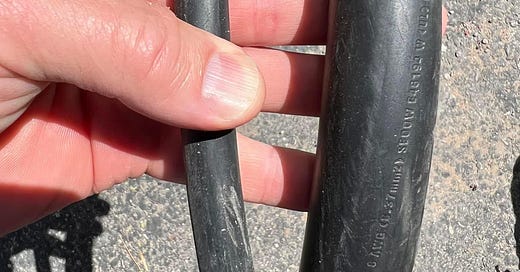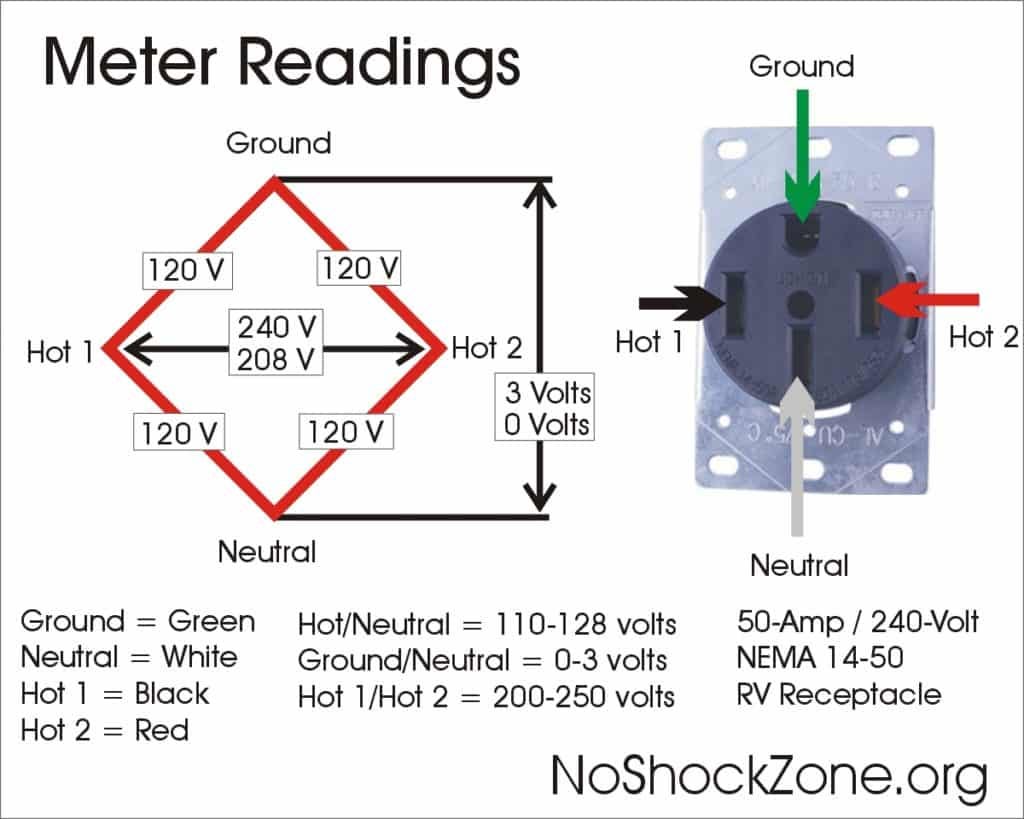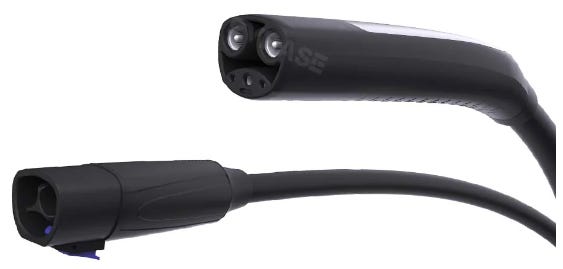Why are 50-amp power cords so heavy?
A Tesla 50-amp charging cord is so much smaller and weighs a lot less...
Here’s a great question from the Airstream Addicts group… - Mike
On the right is my 220 volt, 50 amp cord for the Airstream. On the left is my 220 volt, 50 amp cord for my Tesla. It is seriously 1/4 the size. Airstream should take some lessons from Tesla and give us smaller, more convenient cords!
Everyone,
There two main reasons for the heavier RV power cord. First of all, a 50-amp RV needs a 120/240-volt split-phase power service for full power. While nearly all RVs only need 120-volts for their appliances, this must be split from the 120/240-volt power company feed. And that requires a neutral conductor. See below…
Because of this your RV shore power cord needs four conductors. As you can see from my diagram, that’s Hot-1 (Line-1), Hot-2 (Line-2) , Neutral and Ground. And three of the current-carrying conductors need to be 6 gauge copper wire to carry 50 amperes of current, while the ground conductor only need to be 8-gauge copper since its primary job to provide enough fault current to trip (clear) the circuit breaker rapidly in the event of the short circuit.
What about a Tesla charger extension cord?
Because a Level-2 Tesla charger cord (and all other EV level-2 chargers) only need 240-volts, they can eliminate the neutral conductor. Here’s what a Tesla charger extension cord looks like. By leaving out the neutral conductor, they can save both cost and weight. I’m not sure what the insulation rating is because info on Level-2 charger cords is a hard to find online. But it’s definitely a lot lighter than what’s required on your RV 50-amp power cord.
But wait, there’s more…
Because RV power cords need to lay on the ground between your RV and the pedestal, the insulation needs to be oil, water and abrasion resistant, as well as rated for 600-volts, even though the maximum voltage should be 250 volts. This is called SOOW portable cord which has a much heavier insulation than a Tesla power cord that’s designed to be used inside of your garage.
More to study…
I’ll try to get additional information on exactly what the code requirements are for Level-2 charger cords, so more on this later. But Tesla is very close-lipped about any electrical requirements for their own chargers. Once I know more I’ll do an update…











RV power is two 25 amp 120 volt circuits. RV cables could be 10 gauge for L1 and L2, 6 gauge for the neutral (return), and 8 gauge for the ground. It would make for a less expensive and easier to deal with cable. The problem, for all of this, is building codes. They content that if looks like a duck (a 240 volt circuit), it must be a duck. This is a huge dis-service to the RV community.
You state that while using a 50ty amp, 240 volt, RV cable that the ground wire only needs to be 8 Guage. And the neutral needs to be the same size as the hot wires. However using the diagram that you supplied, you are splitting the 240 volts and you are using the 110V to ground the same as the 110V neutral and it too (the ground) may carry the same current as the neutral. So what am I missing?